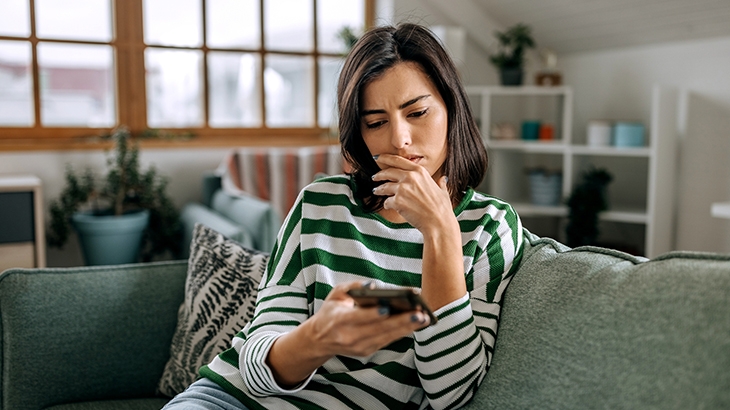Online and Mobile Banking Security and Safety—What You Should Know
Security is key in all things. When it comes to your accounts and your digital banking, it's even more important. First and foremost, though, is online banking safe? How safe is online banking? And, is mobile banking safe? The short answer to all these questions is very simple. Your bank invests in the latest technology and monitoring systems to make sure bad actors won't get access to their systems or your money. But, that doesn't mean you shouldn't do everything you can to protect your accounts too. After all, you still have to make your housing payment and go grocery shopping, and you can't do that if your accounts are drained or frozen due to fraud.

Start with Protecting Your Devices
Start with protecting your phone. We know what you might be thinking—who doesn't have a code or a password for everything?! Not everyone, and it's an easy way for thieves to hack into your accounts, especially if you're like us and have your computer or phone remember all your passwords for you. Check out our article, 6 Ways to Keep Your Devices Secure When Shopping Online. Many of those tips apply to your computer too.
Two-Factor Authentication
People and technology have never been better at figuring out passwords, especially if you don't follow IT's suggestions for a minimum 16 character passwords with symbols, numbers, uppercase, lowercase…everything but the kitchen sink. Who can remember that? Don't make your password too easy, but make sure you can remember it. If you can't remember a long, complicated password (or even if you can) make sure you enable two-factor authentication where possible. This way, even if someone is trying to get into your accounts and somehow manages to guess your password, they still can't get in without entering a one-time code, sent to your phone or email address. It might be annoying sometimes, but it adds quite a bit of security.
Make Sure Your Bank Has Your Current Information
We know all the emails everyone gets can be a lot, but make sure your bank has your most up to date contact information. If your bank starts sending you marketing emails, you can always unsubscribe, but you'll still get valuable emails related to your accounts.
If a fraudster were to get into your online banking, they could update your email address or phone number with their own. If they try to change your email address, you'll get a notification to your current email address, so you'll at least be able to minimize damage and contact your bank right away. All banks do have safeguards to prevent these kinds of things from happening, but at the very least making sure they have your correct information helps them to get ahold of you and verify certain activity is not authorized. Don't worry—if you're curious, you can read up on your bank's privacy policy on their website, or check out how WaFd Bank protects your private information.
Ordering Checks Online Safely
This isn't a highly used tool, but it can be more convenient to use a check in some cases. It's good to know how to order checks safely since you'll need to provide your account number and your bank's routing number to have them printed. The company you're ordering through should be reputable, so read those reviews and really look at them to be sure they make sense, and double check that you're ordering on the correct site and not a phony look-alike. If you're still unsure, ask around and see which company your family or friends have ordered checks through. You can also order them directly through your bank, which is the safest way to order checks, even if it's not always the cheapest.
The Most Important Safeguard is YOU
The number one way that fraudsters get ahold of your money, accounts, and just about anything else is through you. A fraudulent phone call to gather information, a phony email to get you to click on a link that downloads malware to take over your computer, known as phishing emails, and more. Remember to question everything. You always have the option to hang up and call your bank back at the phone number listed on their website (not the one they called you from or the number they left in a voicemail) to verify the issue is real. It's also a good idea to visit your local branch so you can speak with someone in person to clear up whatever might be happening. Check out our blog How to Identify Scams and Prevent Them to learn how to spot phishing emails and more.
WaFd Bank is Here to Help
When it comes to getting your finances in order for the ups and downs of life, a little planning goes a long way. Whether you're a seasoned budgeting pro or new to saving (check out WaFd Bank's account options while you're here), your local WaFd Bank branch is available to help you reach your financial goals. Open an account online, visit your local branch, or give us a call at 800-324-9375 to learn more and open an account today.
Did you find this article helpful? Share it!


